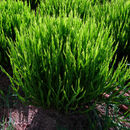Comprehensive Description
provided by Smithsonian Contributions to Zoology
Leptodactylus flavopictus Lutz, 1926
Leptodactylus flavopictus Lutz, 1926a:144. [Type-locality: Mont Serrat, Itatiaia, Rio de Janeiro, Brazil. Holotype: Adolfo Lutz Collection 890, MNRio].
Leptodactylus pachyderma Miranda-Ribeiro, 1926:150–151. [Type-locality: Victoria Isle, São Paulo, Brazil. Holotype: MZUSp 351, adult female.]
DIAGNOSIS.—Specimens of flavopictus have distinct dorsolateral folds and a distinct light stripe on the upper lip. The other species in which some or all individuals share this combination of characteristics are rhodomystax and rhodonotus. Most individuals of rhodonotus lack a distinct light lip stripe. Individuals of flavopictus lack tubercles on the surfaces of the upper tibia and distal tarsus; individuals of rhodonotus have tuberculate upper tibial and distal tarsal surfaces. The posterior surface of the thigh of rhodomystax has a pattern of discrete, distinct light spots; the thigh patterns of flavopictus is contrasting light spots and lines on a dark background, but the spots are irregular, not discrete.
ADULT CHARACTERISTICS (N=16).—Dorsum lacking distinctive pattern (Figure 1, C); lip with broad or narrow light stripe from under eye to angle of jaw (Figure 2, G, H); posterior surface of thigh with contrasting pattern of light spots and lines on a dark background (Figure 3, F); upper tibia with broad continuous or broken bands (Figure 4, A, B); two weakly differentiated dorsolateral folds from eye to sacrum partly dark outlined; dark outlined fold from eye over tympanum to shoulder; no fold from above tympanum to side of body; male with two thumb spines per hand; male with chest spines; upper tibia and distal tarsus smooth; sole of foot smooth; female SVL 130.0±9.2 mm, maximum 139.4 mm, male SVL 123.2±6.1 mm, maximum 133.3 mm; female interorbital distance/head length ratio 0.19±0.02, male 0.18±0.02; female eye-nostril distance/head length ratio 0.25±0.01, male 0.24±0.01; female head length/SVL ratio 0.37±0.02, male 0.38±0.01; female head width/SVL ratio 0.40±0.01, male 0.39±0.02; female femur/SVL ratio 0.43±0.02, male 0.43±0.01; female tibia/SVL ratio 0.44±0.02, male 0.45±0.01; female foot/SVL ratio 0.47±0.02, male 0.48±0.02.
DISTINCTIVE COLORS IN LIFE.—Sides and belly with bright yellow wash and spotting (Lutz, 1926b, pl. 31).
LARVAL CHARACTERISTICS.—Oral disk anterior; oral disk entire; anterior split tooth row no more than ⅓ length of anterior entire tooth row, tooth row formula (from figs. 6 and 7 in Bokerman, 1957).
MATING CALL.—Bokermann (1957) described the call as a “Gluk, Gluk, Gluk,” sounding like the noise when a bottle of water is turned upside down. KARYOTYPE.—Unknown.
DISTRIBUTION (Figure 7).—Found in the Atlantic forest system of Brazil. Apparently the species is more abundant in the forests on some of the offshore islands than on the mainland.
BRAZIL. ESPÍRITO SANTO: Santa Tereza, Reserva Nova Lombardia (USNM 200454).
SĀO PAULO: Boracéia (MZUSP 21240): (USNM 209215); Ilha dos Búzios (MZUSP 21020, 24099–128); Paranapiacaba (MZUSP 10602, 11018).
- bibliographic citation
- Heyer, W. Ronald. 1979. "Systematics of the pentadactylus species group of the frog genus Leptodactylus (Amphibia, Leptodactylidae." Smithsonian Contributions to Zoology. 1-43. https://doi.org/10.5479/si.00810282.301

